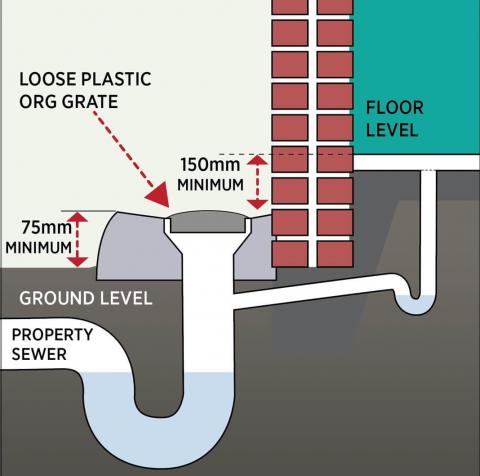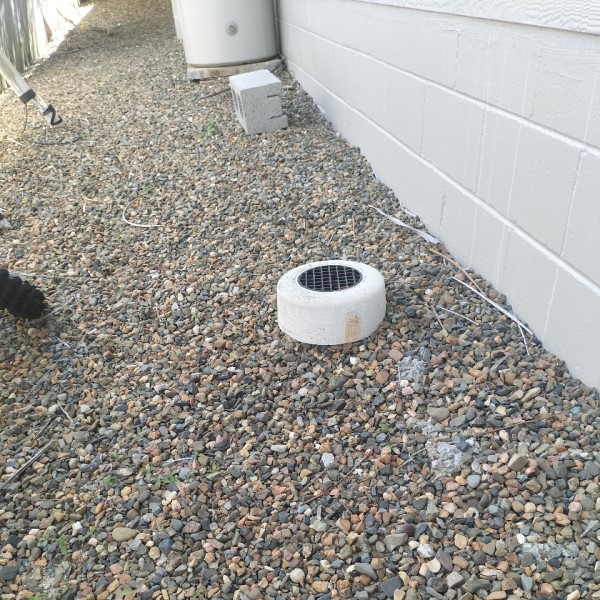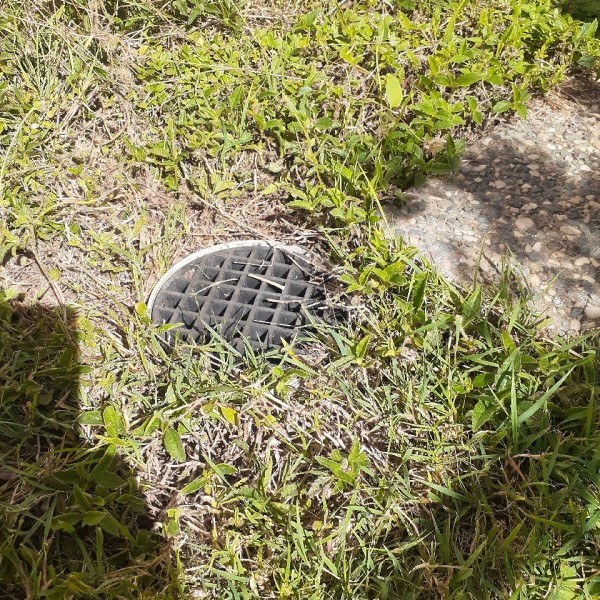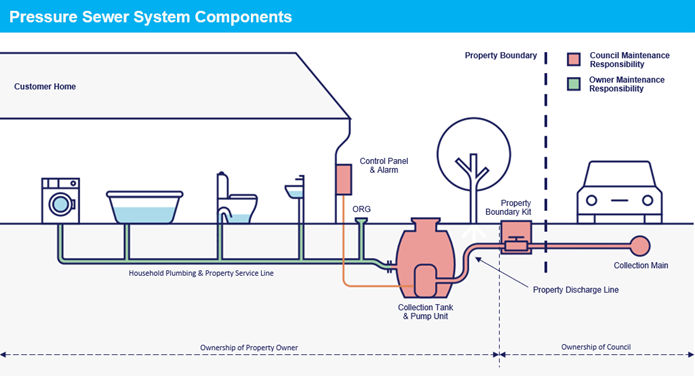Gladstone Regional Council's sewerage system is designed to transfer sewage and waste water from each home or business to the waste-water treatment plants via house drains, sewers and pumping stations. Council is responsible for the maintenance, collection and disposal of sewerage from properties across the Gladstone Region. How sewerage is dealt with depends on a property's location within the region.
Water from Calliope River Sewage Treatment Plant (Gladstone area) is recycled. Recycling effluent effectively reduces the impact of our waste on the natural environment, reduces the demand on our water supply and provides a reliable water supply to industry (especially in times of drought).
Gladstone Regional Council offers the ability to discharge trade waste for licensed contractors at the Gladstone Waste Water Treatment Plant and Agnes Water Waste Water Treatment Plant.
To become an approved licensed trade waste contractor please complete the credit application form(PDF, 635KB) and email it to info@gladstone.qld.gov.au along with your permit number from DERM. Once this information has been received by Council the contractor can discharge trade waste to the Waste Water Treatment plants and to be invoiced the applicable fees.
Council's sewerage system is not designed to carry runoff from rainfall and in times of heavy rainfall, the sewerage system can become affected by the inflow of stormwater which, in turn, can have the following effects:
- The capacity of the network becomes overloaded
- Sewage overflows can occur.
The majority of inflow is caused by:
- Illegal rainwater connection into the sewer network
- Landscaping that diverts stormwater into manholes or overflow relief gullies (ORG).
What constitutes inflow/infiltration?
Inflow/infiltration is any external source of water, stormwater or groundwater that enters the sewerage system.
Why is it a problem?
Inflow/Infiltration increases the volume of water in the sewer systems which can result in the capacity of the network being exceeded. This causes the network to overflow, resulting in environmental harm and creating risks to human health.
Fixing this problem through the construction of larger pipes, pump stations and treatment plants will cost Council many millions of dollars. This is not an acceptable outcome for the ratepayers.
What do I need to do?
Owners/occupants might not always be aware that rainwater from their property is entering the sewerage system.
Previous residents might have connected rainwater pipes illegally to the network. Owners/occupiers must investigate their drainage system by:
- Checking all downpipes discharge to the ground or to the street
- Inspect the area around the ORG to ensure that stormwater can flow away
- Verify during a rain event - if water dams up around the ORG, adjust the landscaping or remove the obstacle.
What next?
Gladstone Regional Council is committed to reducing the incidence of illegal and inadvertent inflows into the sewerage reticulation system. Council conducts inspection programs to identify illegal connections and the inadvertent channelling of water into the sewerage reticulation system.
Council will fine people who blatantly flaunt the law but offers an amnesty for those who seek to rectify the situation within a 30-day grace period. Remember that a decision to avoid warnings may result in penalties but it could directly affect your neighbour's lifestyle.

 (JPG, 1006KB)
(JPG, 1006KB)
An ORG is an opening that acts as a relief point between the house drain and Council's system. The gully trap (ORG) prevents smells and overflows from entering buildings. All waste water from the laundry, kitchen, bath and shower travels through pipes into the ORG. A toilet is different as it connects separately to the main house pipe.
The ORG is located outside your house, generally in the area outside of your kitchen. The ORG should be above ground level to ensure stormwater does not enter.

Typical Overflow Relief Gully installation Source: https://www.qbcc.qld.gov.au/resources/article/overflow-relief-gullies
Inflow through the ORG is normally un-intentional when stormwater cannot flow away due to landscaping or other obstructions blocking the flow-path of the stormwater. The stormwater builds up around the ORG and then, when high enough, enters the network.
Residents need to be aware that any discharge of storm water into the sewer network, whether it through the ORG or connection of storm water downpipes or drainage pipes, is illegal and can result in a Council fine.

Compliant ORG

Non-Compliant ORG
What is a Low-Pressure Sewage System (LPSS)?
A LPSS consists of a tank, pump, control panel and sealed pipes that pump household wastewater from each connected property into the Council sewer network.
These pump units grind up household wastewater (solids) into a liquid and transfer it to Council sewer (located in the road reserve) which forms part of the overall sewerage network and ultimately transfers the wastewater to the wastewater treatment facility.
After installation, the only visible components of the system will be the collection tank lid, pump control panel and boundary kit lid.
On 19 December 2023, Council resolved to assume responsibility for the on-premises components of the LPSS at the properties that have entered into the LPSS service agreement. The layout below highlights the relevant responsibility and ownership.

Click to view larger image
All property owners within the Seventeen Seventy Low-Pressure Sewage System area have the option to hand over maintenance responsibility for their on-premises components to Council. Should property owners wish to participate in this agreement, all property owners must sign the agreement, complete the asset details section and return to Council.
Following submission, Council will execute the agreement, update our systems and send a copy back to the property owner/s for their records (this may take up to 10 business days to fully execute the agreement).
Council will not resume maintenance responsibilities until the agreement has been fully executed.
Once the agreement has been executed, the property owner will be able to contact Council with their reactive maintenance request and Council will contact our preferred Contractor to attend.
Legal Disclaimer
If a property owner chooses not to sign a Low-Pressure Sewerage System agreement and installs equipment of their own choosing, Gladstone Regional Council (“Council”) will not be responsible for any future repairs or maintenance. To ensure compatibility and ongoing support, property owners are encouraged to use equipment that aligns with the products and systems familiar to Council’s employees and contractors. Examples of these products and systems are as follows.
What is the property owner’s responsibility under the LPSS Agreement?
The property owner will retain ownership of all components of the LPSS located on the property to the boundary kit and will be responsible for all running costs (i.e. electricity).
What is Council’s responsibility under the LPSS Agreement?
Council (or authorised service provider/s) will be responsible for the maintenance (including repair/replacement) of the LPSS located on the property to the collection tank inlet coupling.
What happens if I buy a property with a LPSS system?
As a new property owner you have a choice to enter into the existing service agreement scheme for Council to maintain certain on-premises components of the LPSS as outlined in the manual and agreement.
If I did not enter into the agreement when I purchased the property, can I enter into the agreement at any point in the future?
Yes – property owner/s can elect to enter into an agreement at any time.
What happens if a sell a property with LPSS?
The agreement will lapse on transfer of ownership and new property owners will have to enter into a new agreement if they so wish.
What happens if I do not enter into the agreement when I buy a property?
You have to maintain and replace components of the LPSS system except where yourpropertyhas not yet been supplied a replacement pump (each property is subject to one replacement pump and one pump control panel from Council at zero cost to property owner). Once this pump has been supplied you will take on responsibility to maintain and replace any future components.
What is the process when I have an agreement and have an issue with my LPSS System?
The new process, upon agreement execution, you will be able to contact Council with your reactive maintenance request and we will contact our preferred Contractor to attend. Please keep the Owner/Occupant Manual handy as this provides guidance on immediate steps, when to contact Council, and how the system operates.A list of prohibited items that can result in blockages and/or damage to the system can be found in the Owner/Occupant Manual. If Council identifies the primary cause of any failures and/or overflows are as a result of any prohibited items entering the pressure sewerage system, the property owner (in accordance with the service agreement with Council) will be deemed responsible and will be held liable for all costs associated.
What is the process when I do not have an agreement and have an issue with my LPSS System?
The property owner will need to engage their own plumber or electrician at their own expense to investigate and rectify. Where the property has not received one free pump or replacement panel this can be requested from Council, otherwise all maintenance will be the responsibility of the property owner.